We offer to read an annotation, description, summary or preface (depends on what the author of the book "The Life of Milarepa" wrote himself). If you haven't found the necessary information about the book — write in the comments, we will try to find it.
One of the most beloved stories of the Tibetan people and a great literary example of the contemplative lifeThe Life of Milarepa, a biography and a dramatic tale from a culture now in crisis, can be read on several levels. A personal and moving introduction to Tibetan Buddhism, it is also a detailed guide to the search for liberation. It presents a quest for purification and buddhahood in a single lifetime, tracing the path of a great sinner who became a great saint. It is also a powerfully evocative narrative, full of magic, miracles, suspense, and humor, while reflecting the religious and social life of medieval Tibet.For more than seventy years, Penguin has been the leading publisher of classic literature in the English-speaking world. With more than 1,700 titles, Penguin Classics represents a global bookshelf of the best works throughout history and across genres and disciplines. Readers trust the series to provide authoritative texts enhanced by introductions and notes by distinguished scholars and contemporary authors, as well as up-to-date translations by award-winning translators.About the AuthorTsangnyn Heruka (Gtsang smyon Heruka, 1452-1507), the self-proclaimed madman of Central Tibet, was both an iconoclastic tantric master and a celebrated author, best known for his versions of The Life of Milarepa and The Hundred Thousand Songs of Milarepa. Andrew Quintman is an assistant professor of religious studies at Yale. He served as the academic director of the School of International Trainings Tibetan studies program based in Katmandu for seven years. Donald S. Lopez, Jr., specializes in late Indian Mahayana Buddhism and in Tibetan Buddhism. He is Arthur E. Link Distinguished Professor and department chair at the University of Michigan and was elected to the American Academy of Arts and Sciences in 2000.IntroductionThe Buddhism of MilarepaIn his eightieth year, as the Buddha was about to pass into nirvana, he told his disciples that after his death they should cremate his body and then build a stupa or reliquary at a crossroads, explaining that those who visited his stupa and venerated his relics would be reborn in heaven. After his passage, his body was duly cremated. But a dispute arose among his lay followers over who should receive the remains, and so the Buddhas relics were divided into eight portions and distributed among the various groups. The ashes from the pyre made a ninth object of veneration, and the bucket used to apportion the relics made a tenth. Thus not one but ten stupas were erected.Not long after the Buddhas death, one of his chief disciples overheard a monk expressing relief that the Buddha was no longer around to scold the monks. Aghast at the sentiment, the disciple convened an assembly of five hundred monks in a cave on Vulture Peak outside the city of Rajagrha, the site of many of the Buddhas most famous sermons. The purpose of the assembly was to recite what the Buddha had taught, both his discourses as well as the code of monastic discipline. First to speak was Ananda, the Buddhas cousin and personal attendant. He had spent more time with the Buddha than any other monk, and the Buddha had promised to repeat to him any discourse he had delivered on those occasions when Ananda was absent. Ananda was also renowned for his prodigious memory. At this first assembly, Ananda was called upon to recite everything he had heard the Buddha teach. He began the recitation of each discourse with his personal testimony, Thus did I hear. All texts that purport to be the word of the Buddha begin with this famous phrase.A consideration of the Buddhism of Milarepa, as presented in the biography translated here, might begin by noting that the first chapter of the text starts with the phrase Thus did I hear, and that it ends with a dispute over Milarepas relics. These are clear signs that Milarepa was regarded as a buddha by his lineage, and that the author of the biography, Tsangnyn Heruka, made effective use of the tropes of Buddhist literature in the composition of the biography; the story of the distribution of the Buddhas relics and the opening formula of a sutra are renowned among all the Buddhist traditions of Asia.A Buddhist sutra begins with Thus did I hear, and then names the place where the Buddha was residing and who was seated in the audience at the time of the discourse. But here the Buddha is absent, or perhaps more precisely, Milarepa is the Buddha. The scene is not Vulture Peak in India but Belly Cave in Tibet, and the members of the audience are not the famous monks and bodhisattvas of Indian Buddhism, but Milarepas Tibetan disciples, joined by some local Tibetan deities. The implication of the scene is that there was the Indian Buddha, Sakyamuni; there was Padmasambhava, the Indian tantric master who brought Buddhism to Tibet in the eighth century, sometimes referred to by Tibetans as the second Buddha; and there is Milarepa, a Tibetan buddha, born and enlightened in Tibet, without going to India or receiving the direct instructions of an Indian master.One of the standard elements of the Mahayana sutras is for Sakyamuni Buddha to praise a buddha who resides in another universe, telling stories of his former lives as a bodhisattva, describing the glories of the buddha field or pure land that he inhabits. In the biography of Milarepa, his disciple Rechungpa (Ras chung pa, 1084-1161) has a dream in which he finds himself in what seems like a pure land, with buildings made of precious stones and inhabitants dressed in fine brocades. The place is called Oddiyana, Garden of Dakinis, indicating that it is a special place for tantric practice; Oddiyana in northwest India was considered by Tibetans to be the birthplace of Padmasambhava and the place of origin of many important tantric texts and lineages. In this sacred place, Rechungpa is invited to attend the teachings of Aksobhya (Imperturbable), the buddha of the East. As Sakyamuni so often did, the buddha Aksobhya recounts the lives of other buddhas and bodhisattvas. He concludes his discourse by saying, Tomorrow I shall narrate the life story of Milarepa, which is even more excellent than those I have just described, so come and listen. The members of the audience leave the discourse wondering where this buddha Milarepa might reside. Perhaps it is Abhirati, the eastern buddha field of Aksobhya himself, perhaps it is Akanistha, the heaven that is the eighth and highest level of the Realm of Form (rupadhatu) and, according to many Mahayana texts, the abode of the enjoyment body (sambhogakaya) of the Buddha. Rechungpa knows, however, that Milarepa is in neither place, but is rather in Belly Cave, just a few feet away from where he is sleeping.Rechungpas dream introduces a theme that runs throughout The Life of Milarepa: that there are two parallel universes, one profane and one sacred. In one, Milarepa is an impoverished beggar living on nettles in a cold and barren cave; in the other, he is a highly advanced yogin, practicing blissful sexual yoga with beautiful goddesses; in one, Marpa is a cruel and greedy drunk, demanding payment in exchange for his teachings; in the other, he is a compassionate buddha capable of purging the sin of multiple murder from his disciple; in one, Milarepa is a dangerous sorcerer to be avoided at all costs; in the other, he is a kind teacher willing to teach all who approach, even his evil aunt; in one, Milarepa is a murderer, in the other, he is a buddha. Much of the story is concerned with the failure of those in the first world, beginning with Milarepa himself, to perceive the second. After he becomes aware of the sacred world, Milarepas compelling songs are often intended to shift his listeners perceptions from one world to the other. As Rechungpas dream intimates, Milarepa occupies both worlds, suggesting that ultimately the two domains are one.Buddhism arrived late in Tibet. The Buddha lived and taught during the fifth century BCE, and in the centuries after his death his teachings were carried by his monks over most of the Indian subcontinent and north into what is today Kashmir, Pakistan, and Afghanistan. In the third century BCE, Buddhism spread to the island of Sri Lanka, then to China in the first century CE, to Southeast Asia in the third century CE, to Korea in the fourth century, to Japan in the sixth century.Buddhism did not enter Tibet until the seventh century, its influence initially limited to the royal court. The first monastery was not established and the first Tibetan monks were not ordained until the late eighth century. A brief period of generous royal patronage for Buddhist institutions and for the translation of Buddhist scriptures from Sanskrit into Tibetan followed, but this was cut short by the death of a pious king in 838 and the succession of his brother, who persecuted Buddhism. This began the so-called dark period in which Buddhism, and especially monastic Buddhism, declined across the Tibetan domain, remaining in the shadows for more than a century and a half.Buddhism returned in the eleventh century, its renaissance sometimes marked retrospectively by three events. The first was the return to Tibet of Rinchen Sangpo (Rin chen bzang po, 958-1055), a monk dispatched to India by the king of western Tibet at the age of seventeen. He would spend the next seventeen years abroad, most of them in Kashmir, returning as a skilled translator of sutras, tantras, and their commentaries. The second event was the arrival of the great Bengali monk Atisa (982-1054), who came to western Tibet in 1042 at the invitation of the local king. He spent the remainder of his life in Tibet, composing his most influential work there. The third were the journeys of Marpa the Translator (1012-1097) from his home in southern Tibet to Nepal and India, where he received the initiations and instructions that he would pass on to Milarepa. There were other important figures, but these three, two monks and one layman, two Tibetans and one Bengali, each contributed to different elements that were central to what Tibetan historians call the later dissemination (phyi dar).Among the one hundred and fifty-seven text translations credited to Rinchen Sangpo, there are many tantras and tantric commentaries, works that set forth the elaborate world of the mandala, the initiations required to enter it, and the practices meant to transform the aspirant into the fully enlightened buddha who sits on the throne at the center of the mandala palace. Atisa, although an accomplished tantric practitioner and exegete, focused his teachings on the practices of the bodhisattva, especially the cultivation of the aspiration to enlightenment (bodhicitta) and the perfection of wisdom (prajnaparamita) through insight into emptiness (sunyata) as set forth by the Madhyamaka philosophers of India. Marpa returned from his journeys to India with tantric texts to be translated but also with oral instructions of the siddha or adept tradition of Bengal, where enlightenment could be triggered by a spontaneous song or, as in the case of Naropa, by being slapped on the head with the gurus shoe.These three streams of late Indian Buddhism were just beginning to flow freely into Tibet during the eleventh century and the lifetime of Milarepa (1028/401111/23). But they were flourishing by the lifetime of his biographer, Tsangnyn Heruka (Gtsang Smyon Heruka, 14521507). Thus when we consider the Buddhism of Milarepa, at least as represented in his famous biography, we are considering Buddhism as it was understood and practiced in Tibet in the fifteenth century, projected back in time.Nineteenth-century scholars of Buddhism in Europe tended to evaluate the various Buddhist traditions of Asia based on their temporal proximity to the founder. The Theravada tradition of Sri Lanka and Southeast Asiawhose canonical language of Pali was linguistically related to the language that the Buddha likely spoke, which was transmitted to Sri Lanka in the centuries immediately following the Buddhas passing, and which rejected the Mahayana sutras as spuriouswas sometimes dubbed original Buddhism. Chinese Buddhism, with its translations of early scriptures lost in Sanskrit, and its sober dedication to the Mahayana sutras, just as they were being composed in the first centuries of the Common Era, was considered an exemplar of what was then called Northern Buddhism. Tibetan Buddhism was denigrated as the most distant from the pure source, as adulterated with all manner of magical elements from the pre-Buddhist religion of Tibet. Indeed, for some it did not merit the name Buddhism and instead was called Lamaism. It is likely the case that the black magic that figures so heavily in the life of Milarepa, first made available to an anglophone audience in the 1928 edition of Walter Evans-Wentz, Tibets Great Yogi Milarepa, did little to dispel this view.But an alternative view is also possible, not one in which Tibetan Buddhism is suspect because it is not sufficiently early, but one in which it is particularly important because it is so late. Theravada Buddhism was not unaware of the Mahayana sutras; it simply rejected them as the word of the Buddha and generally deemed them unworthy of study. Chinese Buddhism developed as the Mahayana sutras were being composed. It is thus very much a sutra-based Buddhism, one in which a particular sutra, the Lotus Sutra or the Avatamsaka Sutra or the three pure land sutras, provided the focus for an entire school or regimen of practice. By the time that the period of the composition of the major sutras was over, Chinese Buddhism had already developed its own forms. The Chinese monk Xuanzang (602664) departed from the Tang capital in 629 and traveled overland to India to retrieve Buddhist texts, returning sixteen years later to make some of the most accurate translations from Sanskrit into Chinese ever rendered. But the works that he translated were of limited influence because Chinese monks had already developed their own tradition of exegesis of earlier translations of many of the same texts. It was during the period of Xuanzangs sojourn in India that Buddhism was being introduced into Tibet for the first time.Tibet received its Buddhism, especially in the second wave, just as Buddhism was about to disappear from the Indian subcontinent. Indeed, one of the reasons that Atisa came to Tibet in 1042 was the specter of Muslim invasions and the fear that Buddhist monastic universities would be destroyed, a fear that turned out to be justified. Thus Tibet received and made accurate translations of the sutras that were so important in China, Korea, and Japan. But it also received and made accurate translations of the treatises on Buddhist logic and philosophy, including the major works of the Madhyamaka and Yogacara schools as well as the late Yogacara and Madhyamaka synthesis, largely unknown in East Asia. It received and made accurate translations of the extensive literature on the buddha nature, the tathagatagarbha, as well as important commentaries on the Perfection of Wisdom sutras, setting forth in great detail the structure of the bodhisattvas path to buddhahood, commentaries that had little influence in China. And Tibet received the transmission of the tantras, far more than were translated into Chinese, as well as the teachings of the great adepts of medieval India, the mahasiddhas.From this perspective, then, Tibet received the final flower of Indian Buddhism, the culmination of a tradition that stretched back more than a millennium to the time of the Buddha. The Life of Milarepa is rich in its imagery, woven into the biography by Tsangnyn Heruka, beginning with the introductory verses, where so many of the key terms and doctrines of Buddhismmainstream, Mahayana, and Vajrayanaare so skillfully evoked.Some of these elements, although familiar throughout Buddhist literature, have a particular motivation here. One such element is lineage, so central to Buddhist histories, where authenticity and authority are measured by the unbroken succession of teacher and student, how this student received this instruction from his teacher, who received it from his teacher, eventually extending back across spacewhether it be from Japan back to China or from Tibet back to Indiaand back across the centuries, ending at the beginning, with the Buddha (or, in the case of the tantras, a buddha) himself. In The Life of Milarepa, lineage is manifest in two ways, one retrospective, one prospective. The author is concerned here, as he is in another of his important works, The Life of Marpa, to establish a direct connection between Marpa and the Indian siddha tradition, especially with the mahasiddha Naropa. Thus he recounts Marpas meetings with Naropa at several points in the text, and there are constant references to the teachings that Marpa received from Naropa. Marpa did indeed make three trips to India to retrieve tantric teachings. But by the time he made his first trip to India, Naropa had already died; Marpa studied instead with some of Naropas direct disciples. Works by Marpas contemporaries make it clear that he never pretended to have studied with Naropa. Yet by the time that Tsangnyn Heruka wrote his biographies of Milarepa and Marpa, the lineage of the Kagyu sectbeginning from the buddha Vajradhara, then to Tilopa, Naropa, Marpa, and Milarepawas well known, and it was necessary that it be reflected in their life stories. Whether Tsangnyn was himself aware of the lacuna in the lineage is not known.Lineage figures prospectively in the form of prophecy. Prophecies are important elements of Buddhist literature, with prophecy (vyakaranna) listed as one of the nine (or twelve) traditional branches of scripture. Thus, in the sutras and legends (avadana), the Buddha will often make a prophecy or prediction, usually of the future enlightenment of a member of his audience. Scholars find a different meaning in the Buddhas prophecies, using them to date Buddhist texts. Therefore, if the Buddha makes a prophecy about the emperor Asoka, this is proof that the text was composed after Asoka. If the Buddha makes a prophecy about the great Madhyamaka master Nagarjuna, this is proof that the text was composed after Nagarjuna. That is, prophecy is regarded as a device by which Buddhist authors project present importance into the past, enhancing that importance by expressing it in the form of a prophecy by the Buddha himself. In The Life of Milarepa, it is not the Buddha who makes a prophecy but Marpa, when he interprets Milarepas famous dream of the four pillars, each surmounted by a different animal: a lion, a tigress, a garuda, and a vulture. Marpa identifies the vulture that sits atop the pillar in the north to be Milarepa, with the many small birds that fly above it his disciples. The Kagyu sect, flourishing at the time of Tsangnyn Heruka, originated from one of Milarepas last disciples, the monk Gampopa (Sgam po pa, 10791153), whose own disciples would later found the four major branches of the sect. If the date of Tsangnyn Herukas works were not known, the presence of this prophecy would help to date the text at a time when the Kagyu sect was already well established, something that was not the case during Milarepas lifetime.


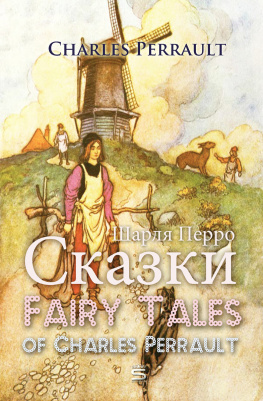


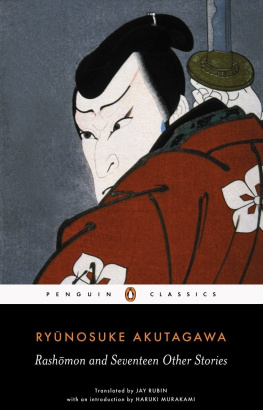
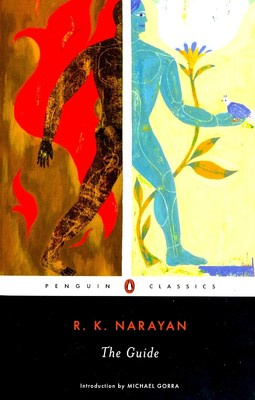
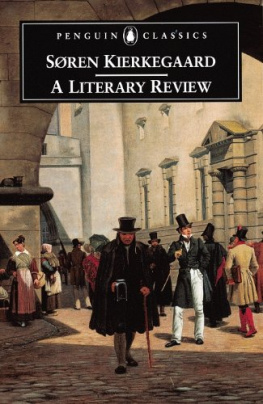
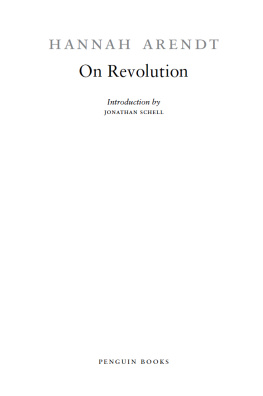

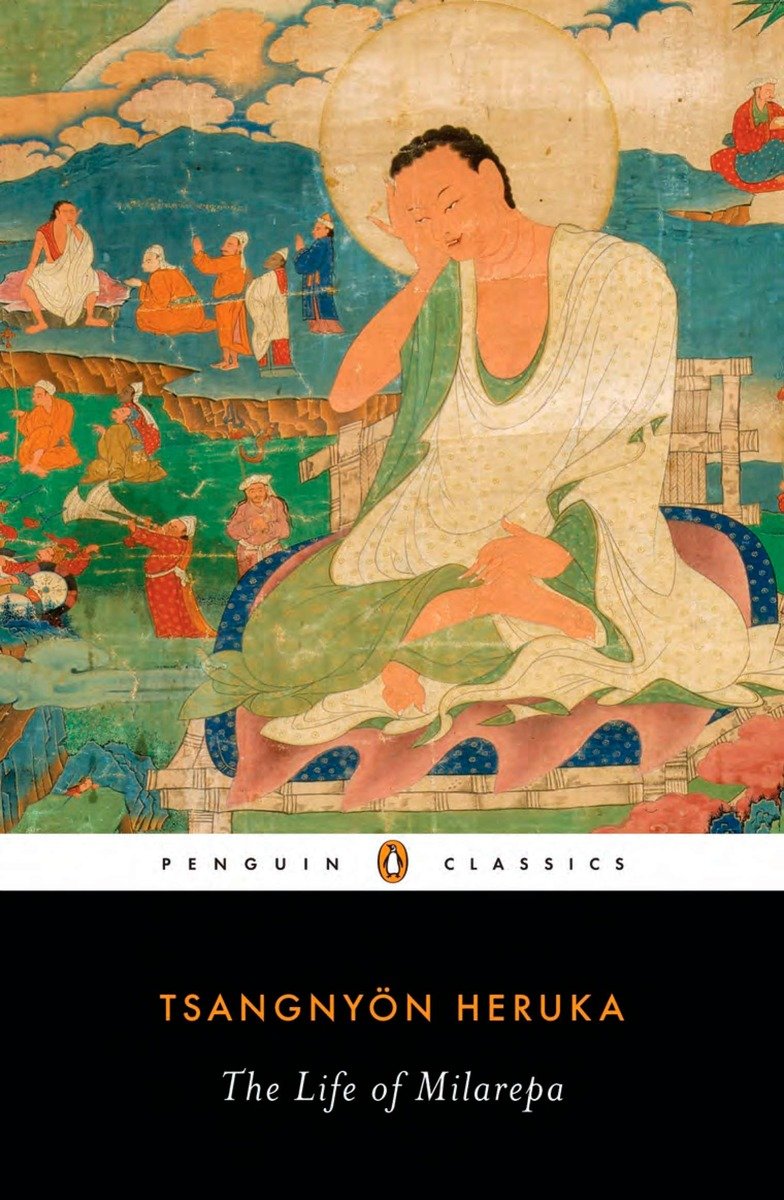
 CLASSICS
CLASSICS